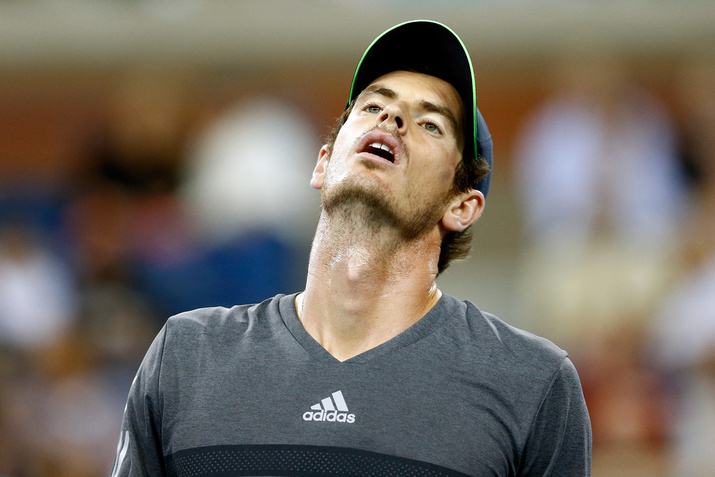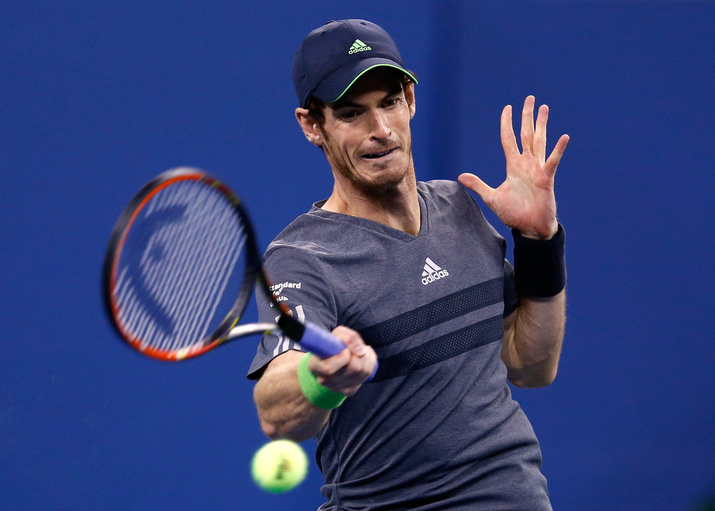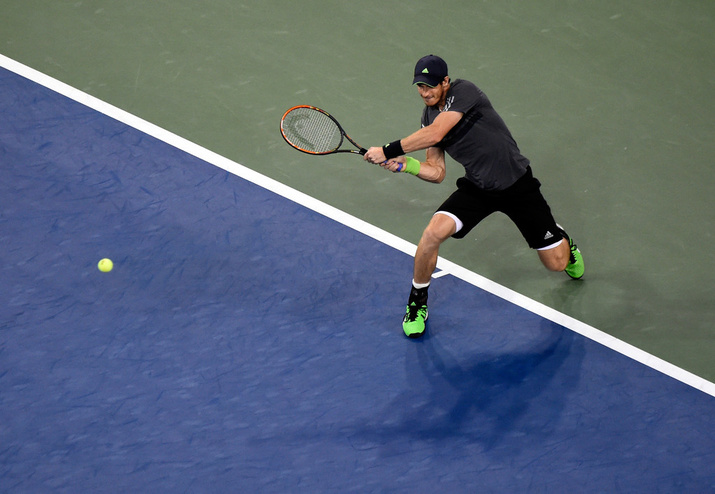Don't miss any stories → Follow Tennis View
FollowWhat Andy Murray Shows About the Mental Game
Andy Murray is ready to serve. He bounces the ball a few times, throws it into the air and swings his racket, but fails to hit the service box with the delivery. The second serve also fails to hit its target.
Loud and clear, and with a large dose of irony in his voice, Murray comments that despite “three years of drill work,” he is still such a poor player that he can not even get a second serve into play. At the next changeover Murray turns around in his chair and displays three fingers towards his box, repeating with a sarcastic smile on his face, “three years of drill work.”

None of today’s top players on the men’s side have received as much criticism for their behavior and body language on the court as Andy Murray. This is not so surprising because none of the top players comes even close to Murray when it comes to original on-court behavior.
Murray admittedly gets on people’s nerves with his gesticulating and his trademark muttered live-commentary of the match, often including key situations in the match, assessments of his own performance, and descriptions of how his body feels and which parts trouble him most at the moment. In fact, Murray’s personality and behavior led to him having to fight for a number of years to get the full backing of his home crowd at Wimbledon, despite it being clear since 2005 that he was always going to be Great Britain’s best hope to get their hands back on the trophy after an almost eight-decade wait.
The Scot’s behavior has not only been difficult to enjoy for viewers and fans but has also been pointed out by a number of former players and experts as his major weakness—the main reason why he lost his first four Grand Slam finals before he managed to win the US Open in 2012. With that US Open win over Novak Djokovic in a five-set final, coming as it did after his Olympic gold earlier in the summer, and with the iconic Wimbledon win the following year, the criticism surrounding Murray’s mentality and behavior died down.
But after a trophy-less 2014 thus far, the discussion on his mentality has become relevant once more. To be fair, Murray has been going through the typical transition season, returning from back surgery and developing a new coaching relationship with Amelie Mauresmo. Still, this is an interesting issue in itself, and also an issue that goes to the heart of the mental side of sport. The debate over Murray’s mental state offers a good example of the dangers of generalizing about what constitutes a ”mentally strong” and a ”mentally weak” player.

A flexible approach is needed when dealing with sport psychology and the mentality or body language of professional athletes. In the end, the only thing that matters is the result and the player’s performance, regardless of his body language and demeanor, and regardless of how well the player’s behavior fits into the framework and ideals that we have come to expect from athletes.
It’s probably fair to say that Murray wastes too much energy and concentration on the wrong things, including situations that he cannot influence and factors that have no relevance to his performance. On the other hand, the criticism is based on a widespread and very inflexible view on the mental approach of athletes, and on psychology in sport in general.
Within tennis, Bjorn Borg and Rafael Nadal are often cited as the perfect examples of mentally strong players, and they are routinely used as benchmarks to assess other players from a mental perspective.
But, as incredibly mentally strong as they are, what Borg and Nadal really show is a single specific approach to reach a strong mental level: the acceptance approach. This is built upon unreflectively accepting what has happened and accepting your thoughts and emotions as natural reactions that you cannot, and should not, try to control. People who follow this approach focus instead on what they can influence, like the next point. This allows them to move on more easily when something goes wrong.
With Borg and Nadal as a standard, Murray would not receive flattering reviews from a mental perspective. Yet functional sports psychology is not about shaping the player and his personality to fit into a sport psychology manual, even if they should try to develop in the right direction. It is more about adapting the method and mental approach to fit the player and his personality.
Murray will never get Björn Borg’s inner peace and balance, nor the Swede’s ability to, without reflection, accept the unfolding event. At the same time, nobody doubts Murray’s drive, determination, and will to win. Few players have a fire like his.
It is taken for granted that all the players base their tactical approach on their strengths. Why should they not also build their mental approach around the strong points of their mentality and on-court personality?

In Murray’s case, that means using that drive and stubbornness to raise the temperature on court from the first game, making it as intense, physical, and painful as possible. Paradoxically, that seems to be where he is at his most comfortable, which you cannot say about a lot of his opponents. If Borg and Nadal are perfect examples of the acceptance approach, Murray could be a strong example of the controlling approach.
There is already a blueprint for this in Murray's straight-sets victories over Djokovic in the semifinals and Federer in the final at the London Olympics in 2012. This was played on his favorite grass courts at Wimbledon, but in front of an unusually passionate and patriotic home crowd. And it was where Murray shone the brightest in his career to that point by embracing the stress and pressure of the surroundings.
That week was a perfect example of what Murray can do with the right approach in the right atmosphere, and it shows how different approaches can work for different competitors. Not everyone can follow the same mental blueprint for success, just as not everyone will maximize their potential by building the same game. Instead, it is important to embrace their unique facets in each player’s personality and build those into strengths rather than changing their competitive makeup into something that does not fit them.










